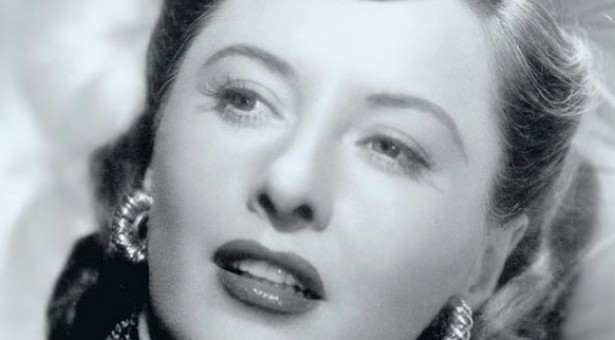Dan Callahan: Barbara Stanwyck – The Miracle Woman

Česká verze recenze je dostupná zde / Czech version of the review is available here
There’s no doubt that Barbara Stanwyck counted among the most famous and talented actresses of classical Hollywood cinema – along with Bette Davis, Katharine Hepburn and Irene Dunne. It is surprising and bewildering, then, that there have been only a couple of authors seriously trying to tackle her life and career, with most books on Stanwyck (usually biographical accounts) not really worthy of our attention. One of those trying to challenge and change this situation is Dan Callahan (a frequent contributor to the Bright Lights Film Journal and Senses of Cinema), whose Barbara Stanwyck: The Miracle Woman was published in February by University Press of Mississippi. One thing, however, has to be clarified right at the beginning: his book is not a biography in the usual sense of the term. Callahan uses the biographical data only as a framework through wich he views Stanwyck’s work as an actress.1
Callahan formulates his goals in the Introduction. He aims to focus not on Hollywood gossip or Stanwyck’s personal life with her marriages and love affairs (there were not that many of them anyway), but on the films and TV shows in which she starred during her long and rich career. Callahan sees Stanwyck „as a major artist“ and he wants to show us „the nitty-gritty of what she accomplished and how she managed to accomplish it“. (p. 3) If the author mentions her marriage to Robert Taylor, for instance, he’s not interested in the fact alone, but in its implications for her work as an actress – in particular her choice of the roles and her performances (the same can be said about her joyless childhood as Ruby Stevens – Barbara Stanwyck became her stage name in the 1920s – or her relationship with her adoptive son Dion. Biography is for Callahan relevant only so far as it pertains Stanwyck’s professional career.).
The text is not organized strictly chronologically either. Callahan opens the book with Stanwyck’s first films from the late 1920s and early 1930s but the following chapters are structured around individual genres and directors regardless of films‘ release dates. The author deals with Stanwyck’s collaboration with Frank Capra, William Wellman, Douglas Sirk, Billy Wilder and Preston Sturges and her contributions to screwball comedy, film noir, soap opera and western. This strategy enables Callahan to effectively assess Stanwyck’s impact on individual film genres and, similarly, to describe the influence of above-mentioned film directors on her developing acting technique and star persona.
But there are also drawbacks to this approach. Callahan’s text often seems unnecessarilly descriptive. He chose to compose the book of detailed textual analyses of individual films, with lengthy plot descriptions complemented by accounts of Stanwyck’s performances – her gazes, gestures and uses of voice. Sometimes – especially when dealing with notoriously well-known films – it might strike the reader as tiring. Callahan also tends to judge the movies very subjectively, which, in my opinion, sometimes clashes with his effort to provide in-depth analyses of all Stanwyck’s films – even those he personally deems poor and overrated (for example Meet John Doe or Christmas in Connecticut). When dealing with Callahan’s shortcomings, I must mention ocassional inappropriateness of some of his expressions which is most evident when he interprets gestures and looks by using excessively expressive language (and unnecessarily so), as apparent in this excerpt from the passage on Douglas Sirk’s There’s Always Tomorrow: „MacMurray makes this movement in just the right measured, ‚fuck you‘ way.“ (p. 185)
Callahan is also less assured when analyzing or judging the work of someone other than actors. For example shortcomings of directors are almost exclusively attributed to their lack of interest in the material (even though such claims are vague and usually unsubstantiated). But when he sticks to Stanwyck and her roles, everything is just fine. Callahan’s observations are inspiring, sometimes controversial and almost never self-evident or perfunctory. I also appreciate frequent comparisons of Stanwyck’s techniques to those of Jean Arthur, Bette Davis or Claudette Colbert.
The book features twelve pages of illustrations, a filmography, a bibliography, and an index. The one thing I find very unfortunate is that quotations in the text are not directly linked to the list of references in the bibliography, which makes it extremely impractical and prevents the reader from looking up the sources he or she might be interested in.
In spite of its flaws, Callahan’s book is remarkable and stimulating and it might even inspire other authors to free themselves from straightforward biographies towards more analytical accounts of classical Hollywood acting. Who knows, maybe we’ll soon get similar monographs on Irene Dunne, Katharine Hepburn, Joan Crawford or Richard Widmark.
Barbara Stanwyck: The Miracle WomanDan CallahanJackson : University Press of Mississippi2012, 252 p.







